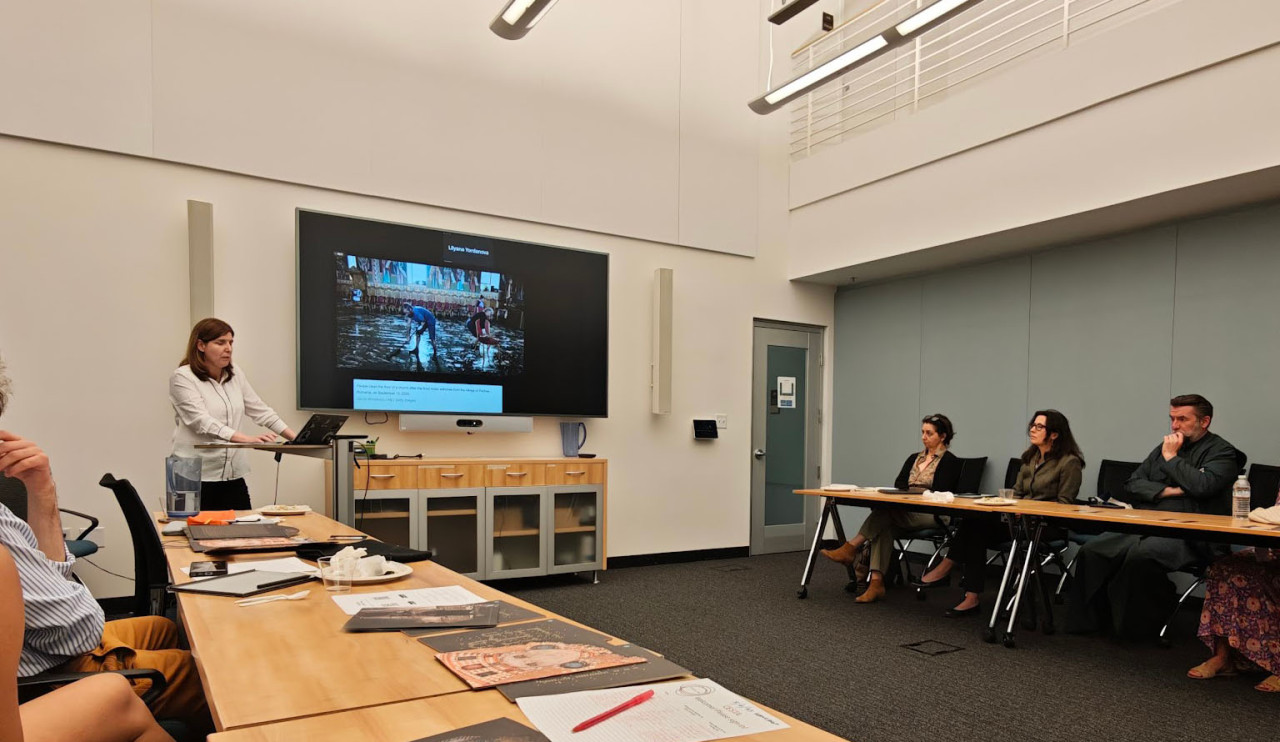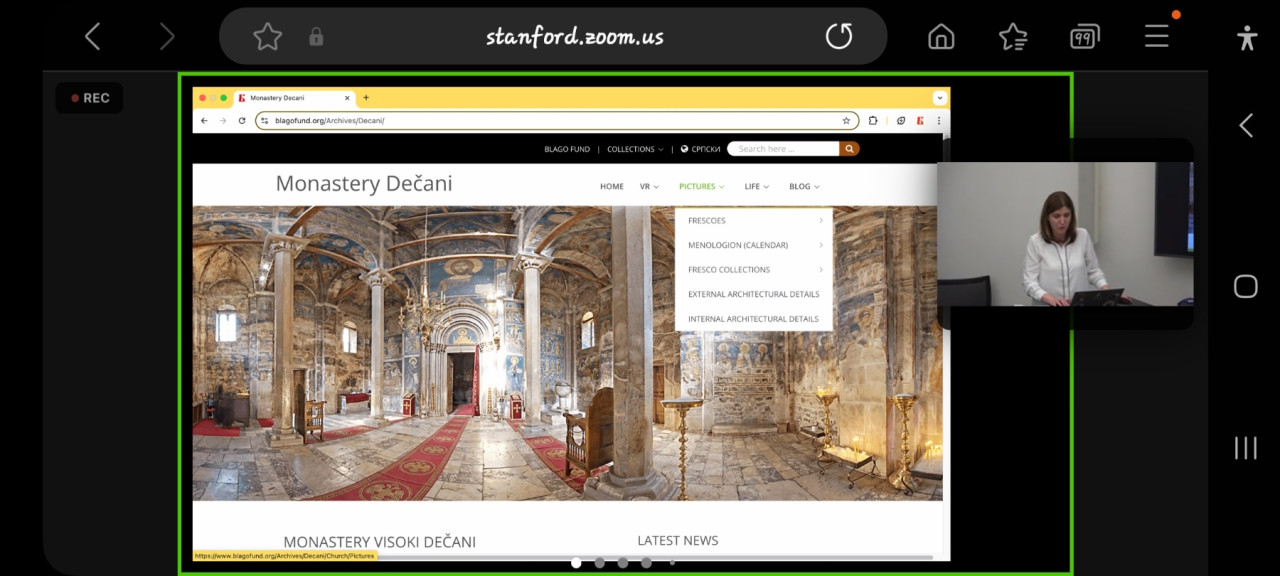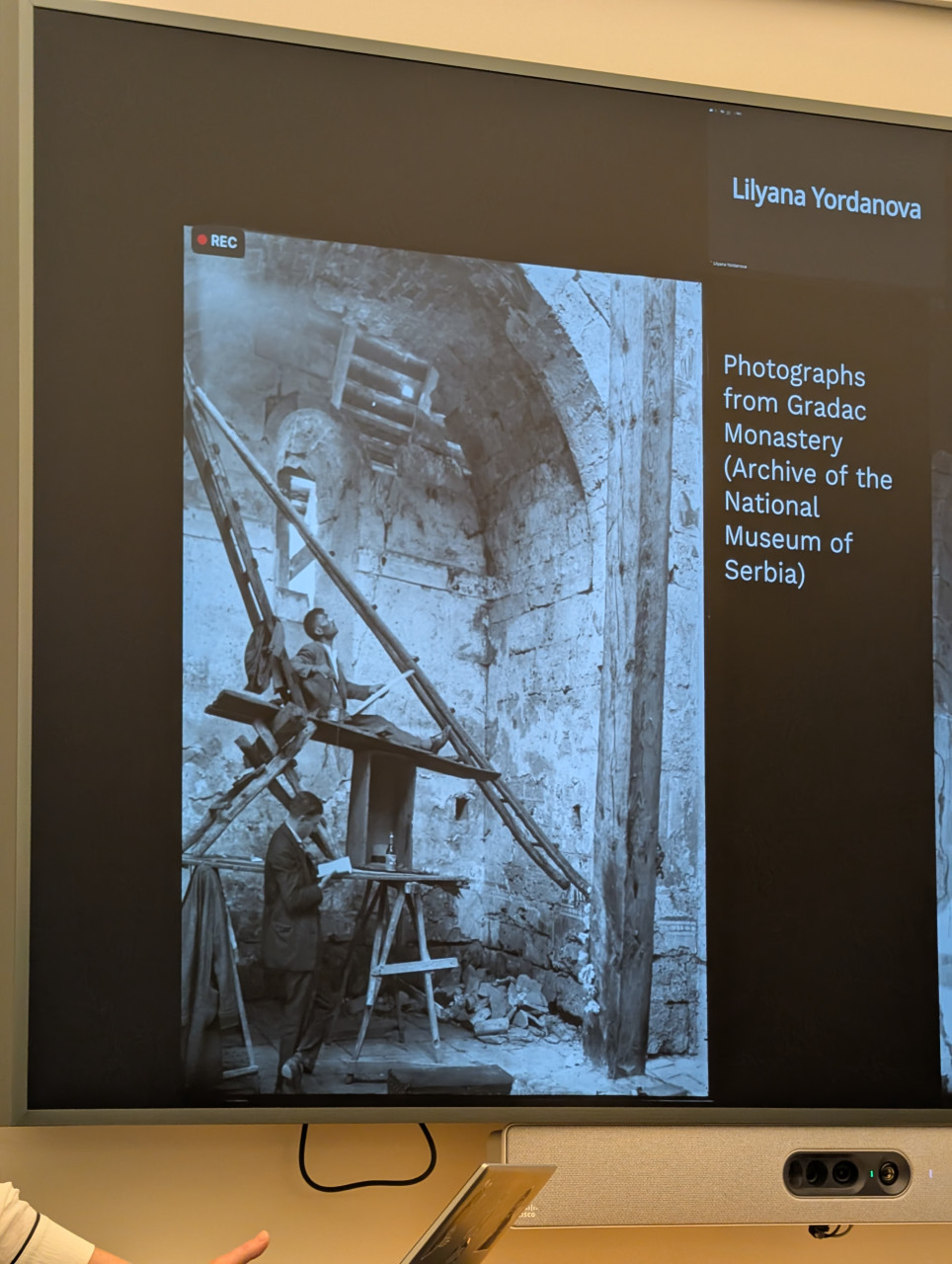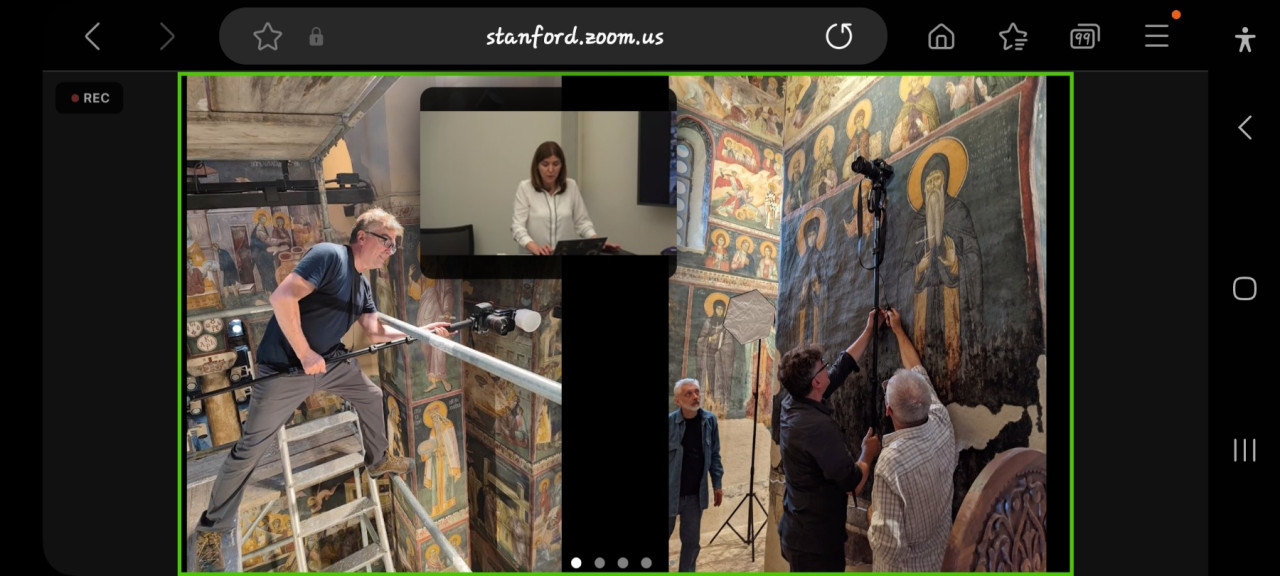BLAGO Blog
Work of BLAGO Fund presented at Stanford University
Last week, our associate, Dr. Ivana Lemcool, gave a lecture at Stanford University. The lecture titled "Making Sacred Spaces Virtual: The Role of Digital Tools in Preservation and Demarginalization of Ecclesiastical Art of Southeastern Europe" was held within the "Global Approaches to Sacred Space" Workshop organized by Prof. Bissera V. Pentcheva and Andrei Dumitrescu.
Dr. Lemcool talked about the importance of open-access digital databases and portals that allow scholars and the general public to learn more about the sacred sites of Southeastern Europe. Many of these churches and monasteries have great significance in the histories of their respective countries, but also, many have exceptional artistic value that transcends national boundaries. Digital resources enable insight into artistic currents across wider geographic areas and the discovery of parallels and analogies between different cultures or instances of cross-cultural exchanges. Detailed photographic documentation is necessary to study one country's monuments in depth, which is not always easy to find online. An exception is found in the case of Serbia, owing to the work of the BLAGO Fund.
Dr. Lemcool further discussed the incentives that prompted the creation of the BLAGO Fund and the work the organization carried out on the territory of Kosovo and Metohija, highlighting the past destruction of the monuments in the province and ongoing threats to their survival and truthful presentation.
Dr. Lemcool touched upon the importance of the work on documenting Serbian medieval monuments carried out by the professionals in the National Museum of Serbia before WWII, and how the photographs they created are still integral to present-day projects, such as the one undertaken by the Museum in Belgrade and Lafayette College. This project will involve digital reconstruction of the fragments of wall painting of Djurdjevi Stupovi and Gradac into 3D models, which will be available online on the websites of the BLAGO Fund and Zeuxis VR, the digital initiative of the Lafayette College, as well as in the exhibition space of the medieval collections of the National Museum of Serbia.
Dr. Lemcool also presented examples of use of digital tools in recent exhibitions, such as the exhibition commemorating 20 years since the inscription of medieval monuments in Kosovo on the UNESCO World Heritage List that took place last winter in Paris and the exhibition on Gračanica Monastery in the Gallery of the Serbian Academy of Sciences and Arts in Belgrade two years ago. Material created by the BLAGO Fund was used extensively in both exhibitions.
During the Q&A, attendees who were present in person and those who joined via Zoom expressed their interest in the work of the BLAGO Fund and wanted to learn more about future plans of the organization, as well as about the conditions and conservation practices concerning Serbian ecclesiastical monuments. Founders of the BLAGO Fund, Nenad and Jelena Vukićević, were also present and were happy to answer some of the questions concerning past experiences and upcoming projects.
More Information
BLAGO Content
While the content of the BLAGO Fund collections is free to use, there are also some restrictions on commercial use and proper attribution of the material. Follow the links below for more information.
> BLAGO Collections License
> Image Request
BLAGO Fund also accepts the contribution of material. Please contact us with any material you wish to publish on our website.
Contact
BLAGO Fund, Inc.
PO Box 60524
Palo Alto, CA 94306
USA
info@blagofund.org






